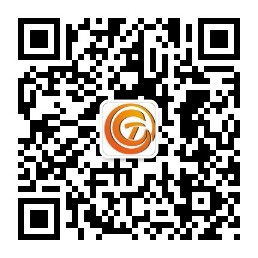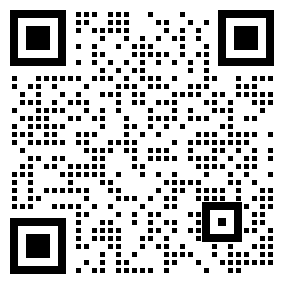Application Solution
Application Solution
Popularization of Bluetooth and Bluetooth speaker knowledge
The inventor of Bluetooth was Swedish company Ericsson, which began research and development as early as 1994. By February 1998, a global small-scale wireless communication technology, now known as Bluetooth, was jointly established by five multinational corporations: Ericsson, Nokia, IBM, Toshiba, and Intel. By the way, why is Bluetooth named? This stems from a small story, in the 10th century Denmark, there was a king named Harald Blatand who was eloquent and sociable. He unified Norway, Sweden, and Denmark. Due to his love for blueberries and blue gums, he is known as the Bluetooth King.
One What is Bluetooth?
The inventor of Bluetooth was Swedish company Ericsson, which began research and development as early as 1994. By February 1998, a global small-scale wireless communication technology, now known as Bluetooth, was jointly established by five multinational corporations: Ericsson, Nokia, IBM, Toshiba, and Intel. By the way, why is Bluetooth named? This stems from a small story, in the 10th century Denmark, there was a king named Harald Blatand who was eloquent and sociable. He unified Norway, Sweden, and Denmark. Due to his love for blueberries and blue gums, he is known as the Bluetooth King. When determining the name, the designers felt that the name 'Bluetooth' was highly expressive and that the personality of the Blatand King was in line with the characteristics of this technology, so they used the name 'Bluetooth'. The Bluetooth logo design is derived from the letters "H" and "B" in the HaraldBluetooth name, and is represented by ancient Nordic letters. When these two are combined, it becomes the logo of Bluetooth
II Bluetooth technology version Bluetooth technology version Bluetooth technology version Bluetooth technology version
As of now, there are six versions of Bluetooth technology: V1.1/1.2/2.0/2.1/3.0/4.0. Among them, V1.1/1.2 versions are early technologies that have been largely phased out. The most widely used version currently is V2.0/2.1, which can achieve a transmission rate of over 2M/s and can simultaneously transmit data and voice. V3.0 and V4.0 versions are improved versions with significantly increased transmission speed and distance, but there is still room for improvement in terms of power consumption and stability. What does the phrase 'Bluetooth Core Specification 2.1+EDR' mean? Although Bluetooth theoretically has a maximum transmission speed of 24Mbps, there is currently no Bluetooth application that requires a transmission speed exceeding 1Mbps Therefore, in order to achieve the transmission of big data streams, people have introduced EDR (Enhanced Data Rate), which greatly improves the data transmission rate of Bluetooth technology, reaching 2.1Mbps In addition to obtaining more stable audio streaming with lower power consumption, it can also fully utilize the bandwidth advantage to simultaneously connect multiple Bluetooth devices, allowing all devices to have satisfactory transmission rates.
III Advantages and disadvantages of Bluetooth transmission
Compared with other transmission methods, Bluetooth has unique advantages.
1. Widely used, Bluetooth technology specifications are globally unified. With a Bluetooth adapter, many devices such as mobile phones, PDAs, wireless headphones, laptops, cars, medical equipment, and computer peripherals can easily connect to Bluetooth devices for data transmission or voice communication. It is widely popular and has good compatibility.
2. Easy to operate Bluetooth technology is an instant technology that does not require fixed infrastructure and is easy to install and set up. It can be connected without cables and is very convenient to use. Simply pair it and it can be put into use with a low operating threshold.
3. Compared to other methods such as infrared, Bluetooth transmission protocol has a significant advantage in speed. Bluetooth 4.0 has a theoretical maximum speed of 24Mbps, and faster speeds can ensure higher sound quality, allowing it to carry music with higher bitrate.
4. The transmission distance of Bluetooth is generally within 10 meters, which is exactly the size of a room and can transmit data through walls, making it very suitable for home environments.
Although it has many advantages, due to the fact that Bluetooth transmission protocol and other 2.4G devices share this frequency band signal, it is inevitable that signals may interfere with each other. In addition, the Bluetooth protocol is not a free technology, and any manufacturer using this technology must pay a patent fee to the organization, which will also be reflected in the cost. Currently, the price of Bluetooth audio devices is still higher than that of ordinary products.
4 Current application of Bluetooth speaker technology
There are currently many Bluetooth earphone products on the market, while Bluetooth speakers are relatively rare. The so-called Bluetooth speaker actually refers to a speaker that relies on Bluetooth transmission protocol for information transmission. As most mobile devices (phones, laptops, tablets) are equipped with Bluetooth chips, they can be quickly recognized without the need for data or audio cables, with simple operation and convenient connection. BeSound's rugby sound system has the appearance of a rugby ball and can be carried around. The specially designed angle variation ensures that every corner of the music playback space can achieve the best audio-visual effect.
From the perspective of sound quality performance, the effective audio data volume of CD sound quality data (44.1KHz sampling rate, 16 bit sampling accuracy) is about 1.4Mbit. To transmit CD sound quality music signals, the transmission rate only needs to be maintained at 2Mbit per second, and the Bluetooth * 2.1+EDR specification is sufficient. Moreover, because such products often use the mature acoustic structure of traditional speakers and achieve wireless playback after integrating Bluetooth modules, their sound quality performance is comparable to that of similar speaker products.
From a specification perspective, although the Bluetooth 3.0/4.0 standard has been proposed, the former is mainly reflected in Bluetooth's RF modulation method aligning with Wi Fi, while the latter is reflected in the application of automatic power control, that is, low power consumption. These two versions reflect the progress of Bluetooth technology, but have little connection with audio applications. From the perspective of chip level applications, Bluetooth chips suitable for 3.0/4.0 versions still have a considerable amount of time to go before they can be widely used.
It can be said that the emergence of wireless audio products greatly facilitates people's lives, making playback simpler, listening easier, and the control experience more outstanding. This will also be the trend of audio products in the future.
The inventor of Bluetooth was Swedish company Ericsson, which began research and development as early as 1994. By February 1998, a global small-scale wireless communication technology, now known as Bluetooth, was jointly established by five multinational corporations: Ericsson, Nokia, IBM, Toshiba, and Intel. By the way, why is Bluetooth named? This stems from a small story, in the 10th century Denmark, there was a king named Harald Blatand who was eloquent and sociable. He unified Norway, Sweden, and Denmark. Due to his love for blueberries and blue gums, he is known as the Bluetooth King. When determining the name, the designers felt that the name 'Bluetooth' was highly expressive and that the personality of the Blatand King was in line with the characteristics of this technology, so they used the name 'Bluetooth'. The Bluetooth logo design is derived from the letters "H" and "B" in the HaraldBluetooth name, and is represented by ancient Nordic letters. When these two are combined, it becomes the logo of Bluetooth
II Bluetooth technology version Bluetooth technology version Bluetooth technology version Bluetooth technology version
As of now, there are six versions of Bluetooth technology: V1.1/1.2/2.0/2.1/3.0/4.0. Among them, V1.1/1.2 versions are early technologies that have been largely phased out. The most widely used version currently is V2.0/2.1, which can achieve a transmission rate of over 2M/s and can simultaneously transmit data and voice. V3.0 and V4.0 versions are improved versions with significantly increased transmission speed and distance, but there is still room for improvement in terms of power consumption and stability. What does the phrase 'Bluetooth Core Specification 2.1+EDR' mean? Although Bluetooth theoretically has a maximum transmission speed of 24Mbps, there is currently no Bluetooth application that requires a transmission speed exceeding 1Mbps Therefore, in order to achieve the transmission of big data streams, people have introduced EDR (Enhanced Data Rate), which greatly improves the data transmission rate of Bluetooth technology, reaching 2.1Mbps In addition to obtaining more stable audio streaming with lower power consumption, it can also fully utilize the bandwidth advantage to simultaneously connect multiple Bluetooth devices, allowing all devices to have satisfactory transmission rates.
III Advantages and disadvantages of Bluetooth transmission
Compared with other transmission methods, Bluetooth has unique advantages.
1. Widely used, Bluetooth technology specifications are globally unified. With a Bluetooth adapter, many devices such as mobile phones, PDAs, wireless headphones, laptops, cars, medical equipment, and computer peripherals can easily connect to Bluetooth devices for data transmission or voice communication. It is widely popular and has good compatibility.
2. Easy to operate Bluetooth technology is an instant technology that does not require fixed infrastructure and is easy to install and set up. It can be connected without cables and is very convenient to use. Simply pair it and it can be put into use with a low operating threshold.
3. Compared to other methods such as infrared, Bluetooth transmission protocol has a significant advantage in speed. Bluetooth 4.0 has a theoretical maximum speed of 24Mbps, and faster speeds can ensure higher sound quality, allowing it to carry music with higher bitrate.
4. The transmission distance of Bluetooth is generally within 10 meters, which is exactly the size of a room and can transmit data through walls, making it very suitable for home environments.
Although it has many advantages, due to the fact that Bluetooth transmission protocol and other 2.4G devices share this frequency band signal, it is inevitable that signals may interfere with each other. In addition, the Bluetooth protocol is not a free technology, and any manufacturer using this technology must pay a patent fee to the organization, which will also be reflected in the cost. Currently, the price of Bluetooth audio devices is still higher than that of ordinary products.
4 Current application of Bluetooth speaker technology
There are currently many Bluetooth earphone products on the market, while Bluetooth speakers are relatively rare. The so-called Bluetooth speaker actually refers to a speaker that relies on Bluetooth transmission protocol for information transmission. As most mobile devices (phones, laptops, tablets) are equipped with Bluetooth chips, they can be quickly recognized without the need for data or audio cables, with simple operation and convenient connection. BeSound's rugby sound system has the appearance of a rugby ball and can be carried around. The specially designed angle variation ensures that every corner of the music playback space can achieve the best audio-visual effect.
From the perspective of sound quality performance, the effective audio data volume of CD sound quality data (44.1KHz sampling rate, 16 bit sampling accuracy) is about 1.4Mbit. To transmit CD sound quality music signals, the transmission rate only needs to be maintained at 2Mbit per second, and the Bluetooth * 2.1+EDR specification is sufficient. Moreover, because such products often use the mature acoustic structure of traditional speakers and achieve wireless playback after integrating Bluetooth modules, their sound quality performance is comparable to that of similar speaker products.
From a specification perspective, although the Bluetooth 3.0/4.0 standard has been proposed, the former is mainly reflected in Bluetooth's RF modulation method aligning with Wi Fi, while the latter is reflected in the application of automatic power control, that is, low power consumption. These two versions reflect the progress of Bluetooth technology, but have little connection with audio applications. From the perspective of chip level applications, Bluetooth chips suitable for 3.0/4.0 versions still have a considerable amount of time to go before they can be widely used.
It can be said that the emergence of wireless audio products greatly facilitates people's lives, making playback simpler, listening easier, and the control experience more outstanding. This will also be the trend of audio products in the future.



